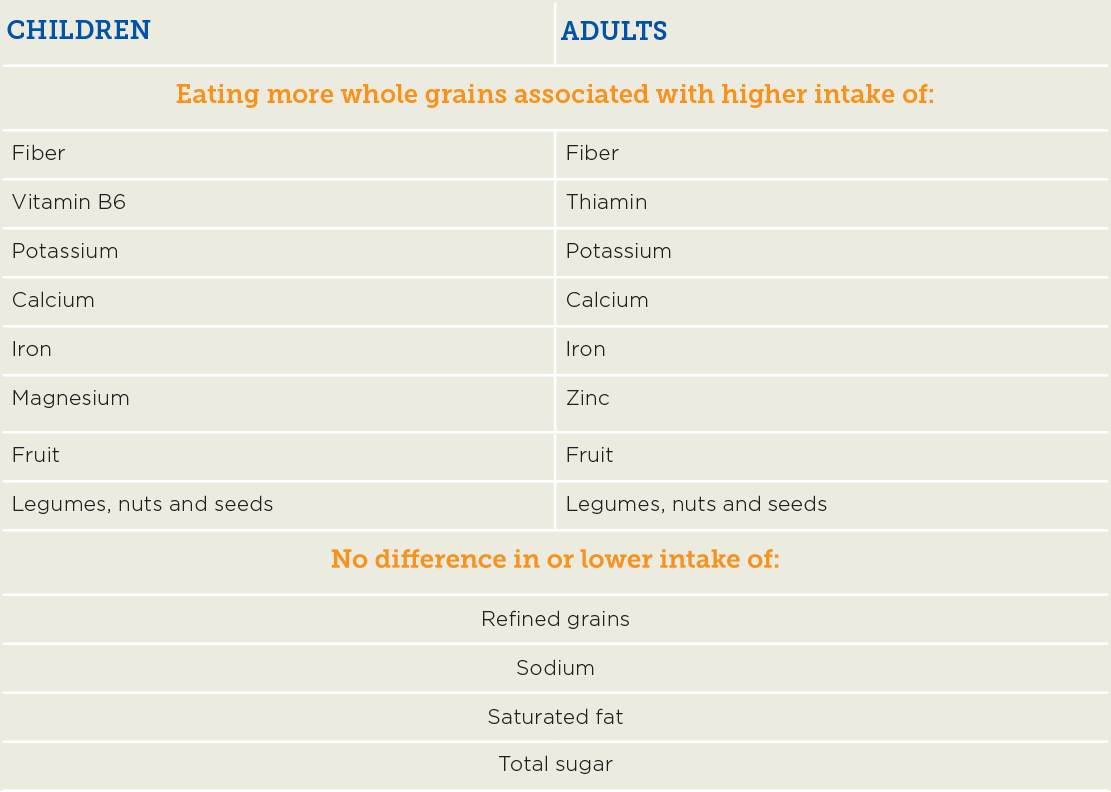
The research
Whole grains have been associated with numerous health benefits. Canada’s Dietary Guidelines recommend consumption of whole grain foods as part of healthy dietary patterns [1], and have included whole grains in the most recent Canada Food Guide. And yet, there is little research on whole grain intake in Canada.
General Mills proudly makes all of our Canadian cereals with whole grain as the first ingredient, and the benefits of whole grains have been a key area of focus for the Bell Institute of Health and Nutrition for over 20 years. That’s why it was a natural fit for scientists at General Mills, led by Jessica Smith[1], to use Canadian dietary intake data to better understand:
- How many Canadians are eating whole grain foods on any given day
- How whole grain intake is associated with nutrients and food group intake and diet quality
- The top sources of whole grains in the diets of Canadians
The results of this research were presented at the Canadian Nutritional Society annual conference in April 2021 and were published on July 1 in the journal PLOS ONE. The following is a summary of the findings.
“There was an exciting opportunity to do a deeper dive into the Canadian population and learn more about how much whole grains were being integrated into their diets,” says Jessica Smith, PhD, Bell Institute of Health and Nutrition at General Mills. “Ultimately, these insights can potentially encourage an increase in whole grain consumption, which could contribute to better health outcomes.”
The results
Jessica and team looked at a representative survey of the Canadian population from 2015 that included detailed information on dietary intake. They found that higher whole grain intake was associated with higher diet quality; higher intake of other recommended food groups including fruits, dairy, and legumes, nuts and seeds; and higher intake of key nutrients, particularly fiber, potassium and iron, compared to no, or lower whole grain intake for both Canadian children and adults.
Whole grains at a glance

More whole grains = more fiber
An increase in whole grains resulted in 53% higher fiber intake for children and 63% for adults.[2]
On any given day in Canada, approximately half of children and adults report consuming no whole grain foods. When they do consume whole grains, the study found there were two key sources: breakfast cereal and whole wheat bread.

We are a force for good in public health by helping Canadians get more whole grains in their diets. When you consider that in Canada, all of our cereals have whole grain as a first ingredient, that’s a great way to meet dietary recommendations.
Simply encouraging Canadians to eat more breakfast cereal, as well as more whole grain bread, rice and pasta in place of refined grains or other foods, can help them increase their overall whole grain intake. And that could ultimately lead to better overall diet quality and health benefits.
- Canada’s Dietary Guidelines 2019, Health Canada
- Compared to no-WG group
